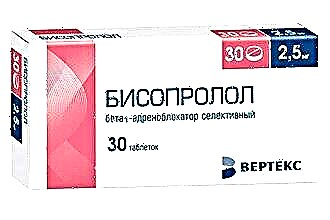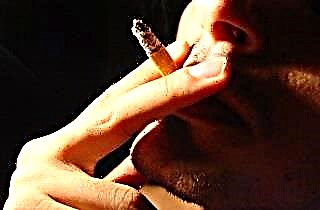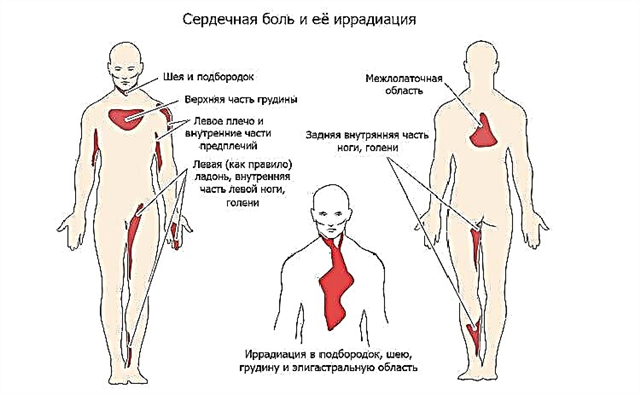The methods of therapy are determined by the causes of the nasal obstruction. Full recovery is possible only if the pathogenic flora in the respiratory tract is destroyed, puffiness and damage in the mucous membranes are eliminated. For these purposes, medications of symptomatic and etiotropic (aimed at eliminating the cause of inflammation) action, as well as physiotherapeutic procedures, are used.
Principles of therapy
 Before treating nasal congestion without a runny nose, you need to undergo a comprehensive examination by an otolaryngologist. Breathing difficulties can be associated with a number of infectious and non-infectious pathologies, the delayed treatment of which leads to dire consequences. Most often, nasal obstruction occurs when:
Before treating nasal congestion without a runny nose, you need to undergo a comprehensive examination by an otolaryngologist. Breathing difficulties can be associated with a number of infectious and non-infectious pathologies, the delayed treatment of which leads to dire consequences. Most often, nasal obstruction occurs when:
- chronic rhinitis;
- rhinosinusitis;
- allergic rhinitis;
- polyps in the paranasal sinuses;
- adenoid vegetation;
- choanal atresia;
- injuries to the nose.
After analyzing the patient's complaints and anamnesis of the disease, the specialist will offer to undergo an instrumental examination. It is possible to identify anatomical defects, the degree of edema and the location of the lesions using rhinoscopy. Endoscopic examination allows detection of neoplasms and other abnormal structures in the nasal cavity.
Treatment of respiratory diseases in which the nose is blocked without rhinitis consists in the use of the following drugs and physiotherapy procedures:
- etiotropic agents - destroy infection and allergic reactions that provoke obstruction of the nasopharynx;
- means of symptomatic action - stop unpleasant manifestations of pathology: soreness in the nasopharynx, nasal congestion, swelling of the mucous membrane, etc.;
- irrigation (washing) of the nasal cavity - flushes out pathological secretions, pathogenic flora and allergens from the respiratory tract.
Chronic nasal obstruction increases the risk of benign nasal tumors by 25-30%.
Complex therapy is the key to successful treatment and restoration of choanal patency. Adhering to the recommendations of a specialist, you can eliminate the pathological manifestations of the disease and prevent serious complications.
Etiotropic drugs
If the nose is blocked due to the development of allergic rhinoconjunctivitis (pollinosis) or a respiratory infection, drugs of etiotropic action will need to be included in the therapy regimen. With their help, it is possible to eliminate directly the cause of edema in the nasal passages - a pathogenic flora or an allergic reaction.
Antihistamines
Why is a stuffy nose without a runny nose? An unpleasant symptom often accompanies the development of hay fever or perennial allergic rhinitis. If a causal allergen is not detected and eliminated in time, a sluggish inflammation will occur in the nasopharynx.
To cope with the manifestations of the disease, you need to take antihistamines. They slow down the synthesis of prostaglandins and reduce the susceptibility of histamine receptors, as a result of which a regression of inflammation is observed. As a rule, the following systemic medications are included in the treatment regimen for hay fever:
- Letizen;
- Mibiron;
- Benacort;
- "Peritol";
- "Histalong".
Barrier agents - "Nazaval" and "Prevalin" will help prevent re-inflammation in the choans (internal nasal openings).
It should be understood that the treatment of nasal congestion without a runny nose should be accompanied by the use of symptomatic medications - vasoconstrictor drops, intranasal corticosteroids, etc. You can wash allergens and irritants from the nasopharynx with an isotonic solution - "Sodium Chloride", "Aqua Marisa", "Dolphin".
Antimycotic drugs
Sometimes a violation of nasal breathing without snot occurs due to the development of a fungal infection in the nasopharynx. This can be facilitated by irrational intake of antibiotics and hormonal agents, hypovitaminosis, decreased general immunity, etc. It is possible to cure mycosis of the nose with the help of antifungal agents, i.e. antimycotics:
- Fluconazole;
- Nizoral;
- Nofung;
- "Procanazole"
- Itrazol.
An overdose of fungicidal and fungistatic drugs can lead to gastrointestinal disorders - diarrhea, nausea, vomiting, etc.
The peculiarity of mycotic diseases is that they are practically asymptomatic. The development of the disease can only be indicated by a violation of nasal breathing, itching and burning in the nasopharynx, and rapid fatigue.
Antibiotics
Chronic inflammation in the airways is caused by either a fungus or bacteria. With a prolonged course of the disease, the nasal secretion thickens, so a runny nose may not appear. However, tissue edema leads to choanal obstruction and, consequently, difficulty in breathing.
If the nose is blocked due to the development of bacterial sinusitis, frontal sinusitis or chronic rhinitis, systemic antibiotics will be able to destroy the infection:
- "Ampicillin";
- Flemoxin Solutab;
- Sumamed;
- Levofloxacin;
- "Tsufuroxim".
Irrational use of antimicrobial medicines is fraught with an increase in the resistance (resistance) of pathogenic bacteria to drugs.
Antiviral drugs
With a cold, rhinitis occurs only 2 days after the penetration of the viral flora into the respiratory tract. Until then, patients feel nasal congestion, myalgia (muscle pain), weakness and weakness. To stop the disease in the rudiment itself, you need to use antiviral drugs:
- Tiloron;
- Ingavirin;
- Groprinosin;
- Orvirem;
- Relenza.
Antiviral agents quickly destroy the infection in the lesions, thereby reducing swelling in the nasal passages. With timely medication, nasal obstruction resolves within 2-3 days. To prevent recurrence of inflammation, it is advisable to take immunostimulating agents ("Kagocel", "Grippferon", "Tsitovir-3") or vitamin-mineral complexes ("Teraflu Immuno", "Sambucol Immuno Forte", "Alphabet").
Nasal preparations
 In the case when the nose is very stuffy, but there is no runny nose, it is recommended to use topical medications. They help to reduce the severity of inflammatory processes, increase immunity, eliminate puffiness and accelerate the healing process of mucous membranes. They cannot be used as first-line drugs, since they only eliminate the consequences of the disease, and not the cause of its development.
In the case when the nose is very stuffy, but there is no runny nose, it is recommended to use topical medications. They help to reduce the severity of inflammatory processes, increase immunity, eliminate puffiness and accelerate the healing process of mucous membranes. They cannot be used as first-line drugs, since they only eliminate the consequences of the disease, and not the cause of its development.
Antimicrobial drops
Combined nasal drops and sprays based on antimicrobial components help reduce swelling and destroy microbial and fungal flora in the nasal cavity. If your nose is clogged with viscous yellowish mucus, in most cases this indicates a bacterial inflammation of the nasopharynx. To speed up recovery, it is recommended to instill the following drugs into the nose:
- "Bactron";
- "Polydexa";
- "Bioparox";
- Doctor Theiss Nazolin;
- "Pinovit".
It is not advisable to use antimicrobial drops for viral inflammation of the nasopharynx.
Antibiotic nasal products help to eliminate only the mycotic and bacterial flora in the nasal passages. Irrational use of drugs entails a decrease in immunity and, as a result, the development of complications.
Hormonal drops
Hormonal drugs are usually included in the treatment regimen for allergic rhinitis and hay fever. When the nose does not breathe due to the formation of angioedema in the mucosa, the following drugs will help to restore choanal patency:
- "Nasobek";
- Avamis;
- Fliksonase;
- "Aldecin";
- "Beconase".
Hormonal drugs are strictly contraindicated in mycotic and bacterial inflammation of the ENT organs.
Glucocorticosteroid drops do not give an immediate result, so they are used in courses of 5-10 days. They are prescribed only by the attending physician after accurately determining the causative agent of the infection. Hormone medications are not recommended for young children under 7 years of age.
Antiallergic drops
Antihistamine drops have a pronounced decongestant and wound healing effect. They contain substances that prevent the production of inflammatory mediators (histamine), so the use of drops helps not only to reduce edema, but also to stop allergic reactions. What are the best online casinos now and where to find them on the Internet.
When the nose is very stuffy due to swelling of the internal nasal openings, the following will help to alleviate the condition:
- Sanorin-Anallergin;
- "Allergodil";
- "Coldakt";
- "Vibrocil".
Antihistamines can be used to treat not only pollinosis or allergic rhinitis, but also colds.
Antiviral drops
Antiviral nasal drugs are etiotropic drugs. For their production, donor leukocytes are used, which help to suppress the activity of the viral flora. Antiviral sprays and drops are recommended for the prevention and treatment of colds:
- "Grippferon";
- "Nazoferon";
- "Genferon".
Antiviral drops are widely used in the treatment of influenza, rhinovirus and herpes infections.
Unlike antibiotics, antiviral drugs do not alter the microflora in the nasopharynx and therefore do not reduce local immunity. They can be used to prevent rhinitis in anticipation of seasonal illness.
Rinsing the nose
 Sanitizing procedures help clear the nasopharynx of mucus and pathogenic agents. In the case of allergies, sinusitis, chronic rhinitis, doctors recommend rinsing the nose with saline. It dilutes nasal secretions, reduces inflammation and unblocks the nasal passages, thereby restoring nasal breathing. To prepare the solution, you need to dissolve 1 tsp. salt in 700 ml of boiled water.
Sanitizing procedures help clear the nasopharynx of mucus and pathogenic agents. In the case of allergies, sinusitis, chronic rhinitis, doctors recommend rinsing the nose with saline. It dilutes nasal secretions, reduces inflammation and unblocks the nasal passages, thereby restoring nasal breathing. To prepare the solution, you need to dissolve 1 tsp. salt in 700 ml of boiled water.
If the nose is stuffy, but there is no snot, it is recommended to drip vasoconstrictor drops before the procedure. For rinsing the nose, you can use special irrigators, soft-tipped pears or neti pot - a special vessel with a convenient spout designed to cleanse the nasal passages of dust and mucous secretions. To achieve the desired effect, the procedure must be repeated at least 3 times a day for more than a week.
Conclusion
Difficulty nasal breathing can be the result of a wide variety of respiratory conditions. The treatment strategy is determined by the cause of the swelling in the nasal cavity. Allergic manifestations are eliminated with antihistamine tablets, topical glucocorticosteroids and nasal barrier drugs.
Infectious inflammation in the nasopharynx is treated with drugs aimed at destroying the pathological flora - antibiotics, antimycotics, antiviral drugs. To alleviate the course of the disease, local drugs - hormonal, antiallergic, antiviral and antimicrobial drops - allow. To prevent recurrence of diseases, it is recommended to take vitamin-mineral complexes or immunostimulating drugs.



